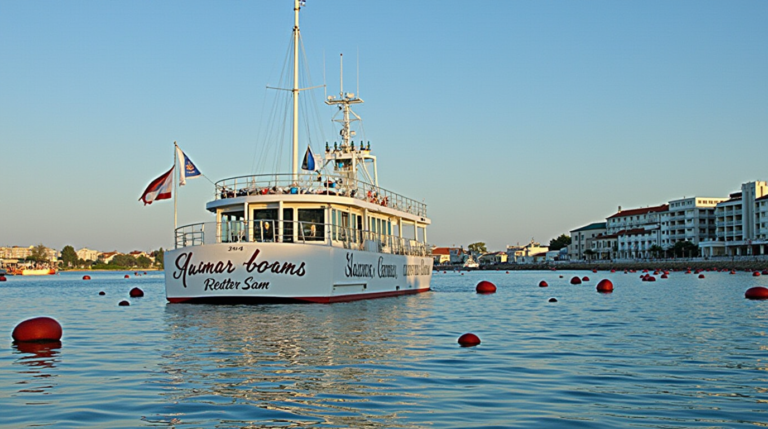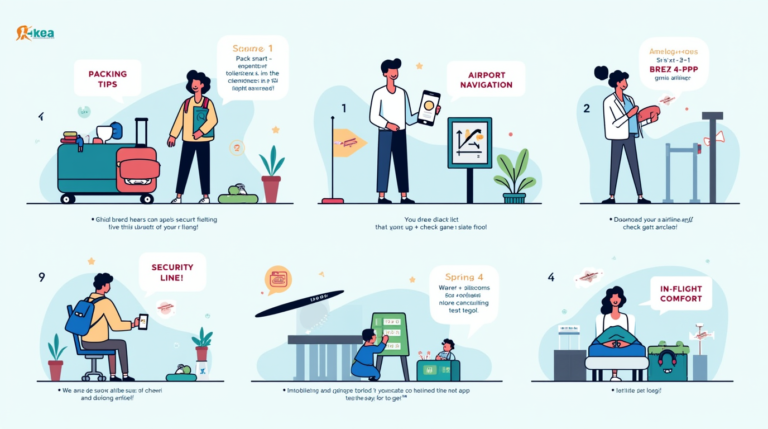Tips for Traveling Abroad for the First Time
Table of Contents
Tips for Traveling Abroad for the First Time: A Complete Guide for New International Travelers
Traveling internationally for the first time can feel both exhilarating and overwhelming. As someone who has spent decades exploring the globe and helping others plan their adventures, I’ve compiled this comprehensive guide to make your first international journey as smooth as possible. From essential pre-trip preparations to navigating foreign airports and choosing ideal destinations, this guide covers everything you need to know before setting foot on foreign soil.
Important Things To Prepare Before Traveling Abroad
The success of your international trip largely depends on proper preparation. Here’s what you need to organize well before your departure date:
International Travel Documents Checklist
Nothing causes more travel anxiety than document concerns. Ensure you have:
- A valid passport (with at least six months validity beyond your return date)
- Required visas for your destination (apply at least 3-4 months in advance)
- International driver’s permit (if planning to drive)
- Printed and digital copies of all important documents
- Travel insurance documentation
- Emergency contact information
Your passport is your most crucial travel document. Many countries won’t allow entry if your passport expires within six months of your visit. Check the specific entry requirements for your destination through your country’s official travel advisory website.
Pack Your Carry-On Strategically
Your carry-on bag should contain all essentials in case your checked luggage gets delayed:
- All travel documents (passport, visa, insurance cards)
- Electronics and chargers (phone, camera, adapters)
- Essential toiletries (under 3.4oz/100ml)
- Prescription medications in original containers
- Change of clothes (at least one complete outfit)
- Comfort items for the flight (eye mask, travel pillow)
- Snacks and an empty water bottle to fill after security
Remember that liquids in your carry-on must comply with the 3-1-1 rule: containers no larger than 3.4 ounces (100ml), all fitting in one quart-sized clear bag, with one bag per passenger.
Plan Your First Day Transportation
After a long international flight, the last thing you want is confusion about how to reach your accommodation. Research and arrange:
- Airport transfers (pre-book if possible)
- Public transportation routes from the airport
- Local taxi information and approximate costs
- Maps (both digital and physical)
- The address of your accommodation written in the local language
Having your first day’s transportation figured out reduces arrival stress significantly. Many seasoned travelers recommend pre-booking airport transfers for first-time international trips, even if it costs slightly more.
Medications and Prescriptions
Healthcare access varies dramatically around the world. Prepare by:
- Packing enough prescription medication for your entire trip plus extra for unexpected delays
- Keeping medications in original labeled containers
- Bringing a doctor’s note for prescribed medications, especially controlled substances
- Researching if your medications are legal in your destination country (some common U.S. prescriptions are illegal elsewhere)
- Packing a basic first-aid kit with over-the-counter essentials
Translation Apps and Communication Tools
Even in countries where English is widely spoken, having translation tools can enhance your experience:
- Download Google Translate or similar apps with offline capabilities
- Learn basic phrases in the local language (greetings, please, thank you, help)
- Consider a pocket Wi-Fi device or international data plan
- Research local emergency numbers and save them in your phone
What To Do at the Airport: Step-by-Step
International airports can be confusing even for experienced travelers. Here’s your roadmap:
Before You Leave Home
- Research airport and country regulations specific to your destination
- Check in online 24 hours before your flight when possible
- Download your boarding pass to your phone and print a backup copy
- Verify your flight status before heading to the airport
At the Airport
- Arrive Early: Plan to be at the airport at least three hours before international flights
- Check In: Present your passport, visa, and any required health documentation at the airline counter
- Baggage Drop: Check any luggage that doesn’t meet carry-on requirements
- Security Screening: Have your passport/ID and boarding pass ready; remove liquids, electronics, and sometimes shoes
- Passport Control/Immigration: Complete necessary departure forms and have your travel documents ready
- Find Your Gate: Check departure boards and give yourself plenty of time to reach your gate
- Pre-Boarding: Listen for announcements and follow boarding instructions
- In-Flight Forms: Complete arrival declaration forms during your flight if required
The most common mistake first-time international travelers make is not allowing enough time at the airport. The recommended three-hour buffer exists for good reason—international check-in, security, and immigration processes take significantly longer than domestic flights.
More Tips for Flying Internationally
Enhance your international flight experience with these proven strategies:
Flight Planning Strategies
- Minimize Connections: Direct flights cost more but reduce the risk of delays and missed connections
- Join Loyalty Programs: Sign up for frequent flier and hotel rewards programs even before your first trip
- Choose Overnight Flights: For long-haul journeys, overnight flights help combat jet lag and maximize vacation time
Document Security
- Digital Backup: Upload copies of all travel documents to secure cloud storage
- Email Copies: Send document copies to yourself and a trusted contact
- Use a Document Organizer: Keep physical documents together in a dedicated travel wallet
In-Flight Comfort
- Pack Entertainment: Download movies, books, and podcasts before departure
- Stay Hydrated: Drink plenty of water and limit alcohol and caffeine
- Move Regularly: Get up and walk the aisle every 1-2 hours on long flights
- Dress in Layers: Aircraft temperatures can vary significantly
- Combat Jet Lag: Adjust to your destination’s time zone as soon as you board
Pre-Landing Preparation
- Complete all necessary arrival forms before landing
- Organize your documents for efficient immigration processing
- Declare all required items on customs forms
- Research your arrival terminal and transportation options
First-Time International Travel Destinations
For your first international journey, consider destinations that offer the right balance of comfort and adventure:
English-Speaking Destinations
For absolute beginners, countries where your native language is spoken can ease the transition to international travel:
Toronto, Canada: With minimal culture shock for Americans, Toronto offers world-class dining, diverse neighborhoods, and proximity to Niagara Falls. The favorable exchange rate and excellent public transportation make it ideal for first-timers.
Edinburgh, Scotland: This walkable city combines stunning historic architecture with friendly locals who speak English (albeit with a charming accent). The compact city center makes navigation straightforward for newcomers.
Beginner-Friendly Non-English Destinations
Ready for a slight language challenge with excellent tourist infrastructure?
Barcelona, Spain: English is widely spoken in tourist areas, and the city’s logical layout makes it navigable for beginners. The combination of beach, culture, and cuisine creates a perfect first European experience.
Paris, France: Although French is the primary language, tourist areas have excellent English signage and services. The iconic landmarks and walkable central districts make orientation simple despite the language difference.
Nassau, Bahamas: Close to the U.S. with English as the official language, Nassau offers a tropical introduction to international travel with minimal logistical challenges.
Traveling Abroad Post COVID-19
The pandemic has permanently changed certain aspects of international travel. Stay prepared by:
Researching Entry Requirements
- Check the official government website of your destination for current requirements
- Verify vaccination, testing, and quarantine policies
- Research mask mandates and local health guidelines
- Understand what’s needed for return to your home country
Utilizing Official Resources
For the most accurate information, consult:
- Interactive travel restrictions maps from IATA or Sherpa
- The CDC’s country-specific information pages
- Your government’s travel advisory website
- Your airline’s COVID-19 policy page
Preparing for Changes
- Monitor requirements until departure day as policies can change quickly
- Book accommodations with flexible cancellation policies
- Consider travel insurance with COVID-19 coverage
- Pack extra masks, hand sanitizer, and personal protective equipment
Special Focus: Traveling to Japan for the First Time
Japan represents the perfect balance of exotic culture and excellent tourist infrastructure, making it increasingly popular for adventurous first-time international travelers.
Japanese Cultural Essentials
Understanding basic Japanese etiquette enhances your experience:
- Greetings: A slight bow or nod is customary when meeting people
- Home Etiquette: Always remove shoes when entering homes and some restaurants
- Dining Customs: Use the provided wet towel to clean hands before eating, never stick chopsticks upright in rice, and avoid eating while walking
- Temple Behavior: Purify hands and mouth at water pavilions before entering sacred spaces
Language Navigation
Japan is navigable without Japanese language skills because:
- Major transit hubs have English signage
- Tourist attractions offer English information
- Many restaurants have picture menus or plastic food displays
- Learning basic phrases like “arigatou” (thank you) and “sumimasen” (excuse me/sorry) goes a long way
Financial Considerations
- Japan remains largely cash-based outside major cities
- Bring Japanese yen from authorized currency exchanges
- A week in Japan typically costs between $1,500-$2,500 per person, including mid-range accommodations, transportation, meals, and activities
- The Japan Rail Pass offers significant savings for tourists planning to use bullet trains between cities
Seasonal Planning
Japan offers unique experiences year-round:
- Spring: Cherry blossom season (late March to early April) offers breathtaking scenery but comes with premium prices and crowds
- Summer: Vibrant festival season with warmer temperatures, though humidity can be challenging
- Fall: Spectacular autumn foliage with pleasant temperatures and fewer tourists
- Winter: Snow festivals in Hokkaido and excellent opportunities for hot spring bathing with mountain views
Travel Insurance Considerations
One often overlooked aspect of international travel is comprehensive insurance coverage.
Understanding Accidental Death & Dismemberment Coverage
While not pleasant to consider, AD&D coverage provides financial protection if the unthinkable happens during your travels. This coverage typically pays benefits if you die in an accident or lose limbs or eyesight while traveling.
What’s Typically Covered
Most travel health insurance policies with AD&D benefits cover:
- Accidental death during your trip
- Loss of limbs or eyesight due to accidents
- Death resulting from an accident that occurs during your coverage period
What’s Typically Excluded
Be aware that AD&D policies generally don’t cover:
- Death or injury due to illness
- Incidents occurring while intoxicated
- Self-inflicted injuries
- Injuries from high-risk activities (often requiring separate coverage)
Repatriation Considerations
Standard AD&D coverage typically doesn’t include repatriation of remains. For complete protection, ensure your policy includes a specific Repatriation benefit, which covers the considerable expense of transporting remains home in the tragic event of death abroad.
Final Thoughts
Your first international trip represents the beginning of a lifetime of global adventures. By thoroughly preparing your documents, packing strategically, understanding airport procedures, and choosing an appropriate first destination, you’ll set yourself up for success. While the planning process might seem daunting, the rewards of international travel—expanded perspectives, cultural connections, and unforgettable experiences—make every bit of preparation worthwhile.
Remember that even the most experienced travelers were once first-timers. Embrace the learning process, expect occasional challenges, and maintain a flexible attitude. With proper preparation and an open mind, your first international journey will likely be the first of many amazing global adventures.








One Comment